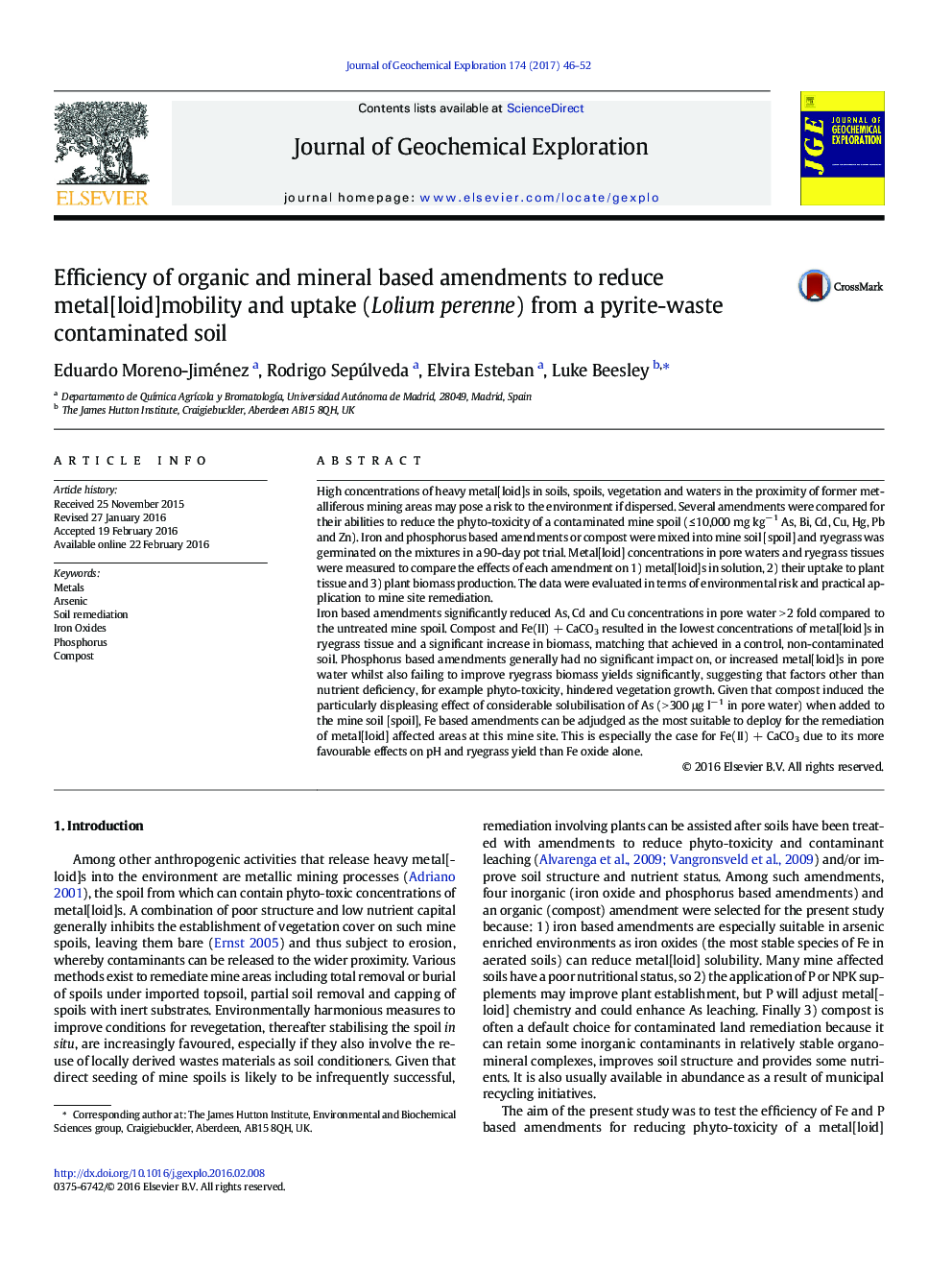| کد مقاله | کد نشریه | سال انتشار | مقاله انگلیسی | نسخه تمام متن |
|---|---|---|---|---|
| 5754489 | 1620885 | 2017 | 7 صفحه PDF | دانلود رایگان |
- Mineral and organic amendments were applied to a multi metal[loid] contaminated mine soil [spoil] in a 90 day pot trial.
- Iron (Fe) based amendments reduced Cd and Cu concentrations in pore water furthest compared to the untreated mine spoil.
- Fe(II)Â +Â CaCO3 was highly efficient at reducing metal[loid] concentration in ryegrass tissue and increasing biomass yield.
- Phosphorus (P) based amendments generally had no significant impact on ryegrass biomass whilst compost mobilised As into pore water.
- Thus Fe(II)Â +Â CaCO3 amendment should be considered in field-remediation trials at the studied mine site.
High concentrations of heavy metal[loid]s in soils, spoils, vegetation and waters in the proximity of former metalliferous mining areas may pose a risk to the environment if dispersed. Several amendments were compared for their abilities to reduce the phyto-toxicity of a contaminated mine spoil (â¤Â 10,000 mg kgâ 1 As, Bi, Cd, Cu, Hg, Pb and Zn). Iron and phosphorus based amendments or compost were mixed into mine soil [spoil] and ryegrass was germinated on the mixtures in a 90-day pot trial. Metal[loid] concentrations in pore waters and ryegrass tissues were measured to compare the effects of each amendment on 1) metal[loid]s in solution, 2) their uptake to plant tissue and 3) plant biomass production. The data were evaluated in terms of environmental risk and practical application to mine site remediation.Iron based amendments significantly reduced As, Cd and Cu concentrations in pore water > 2 fold compared to the untreated mine spoil. Compost and Fe(II) + CaCO3 resulted in the lowest concentrations of metal[loid]s in ryegrass tissue and a significant increase in biomass, matching that achieved in a control, non-contaminated soil. Phosphorus based amendments generally had no significant impact on, or increased metal[loid]s in pore water whilst also failing to improve ryegrass biomass yields significantly, suggesting that factors other than nutrient deficiency, for example phyto-toxicity, hindered vegetation growth. Given that compost induced the particularly displeasing effect of considerable solubilisation of As (> 300 μg lâ 1 in pore water) when added to the mine soil [spoil], Fe based amendments can be adjudged as the most suitable to deploy for the remediation of metal[loid] affected areas at this mine site. This is especially the case for Fe(II) + CaCO3 due to its more favourable effects on pH and ryegrass yield than Fe oxide alone.
Journal: Journal of Geochemical Exploration - Volume 174, March 2017, Pages 46-52
